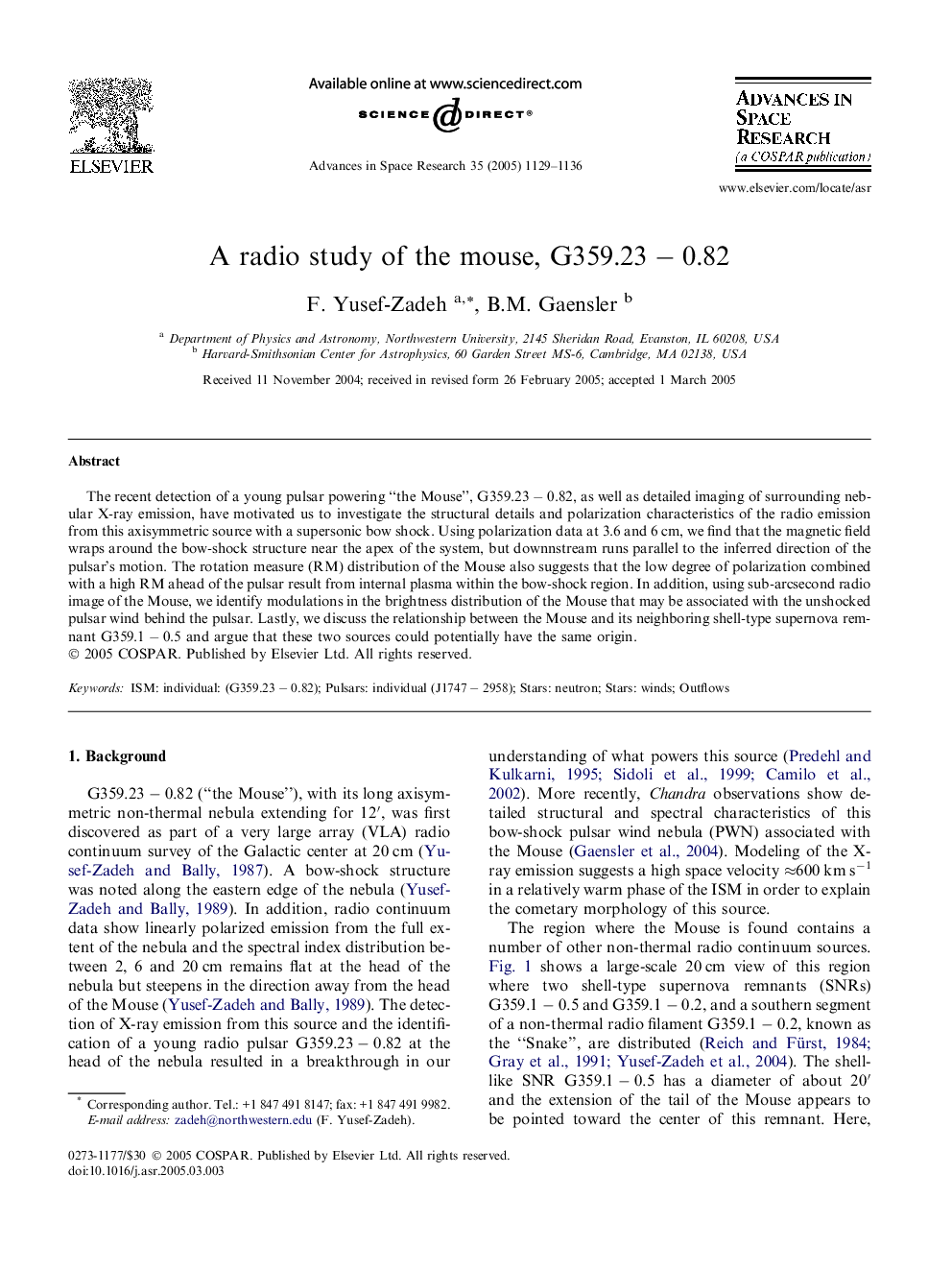| Article ID | Journal | Published Year | Pages | File Type |
|---|---|---|---|---|
| 10695965 | Advances in Space Research | 2005 | 8 Pages |
Abstract
The recent detection of a young pulsar powering “the Mouse”, G359.23 â 0.82, as well as detailed imaging of surrounding nebular X-ray emission, have motivated us to investigate the structural details and polarization characteristics of the radio emission from this axisymmetric source with a supersonic bow shock. Using polarization data at 3.6 and 6 cm, we find that the magnetic field wraps around the bow-shock structure near the apex of the system, but downnstream runs parallel to the inferred direction of the pulsar's motion. The rotation measure (RM) distribution of the Mouse also suggests that the low degree of polarization combined with a high RM ahead of the pulsar result from internal plasma within the bow-shock region. In addition, using sub-arcsecond radio image of the Mouse, we identify modulations in the brightness distribution of the Mouse that may be associated with the unshocked pulsar wind behind the pulsar. Lastly, we discuss the relationship between the Mouse and its neighboring shell-type supernova remnant G359.1 â 0.5 and argue that these two sources could potentially have the same origin.
Keywords
Related Topics
Physical Sciences and Engineering
Earth and Planetary Sciences
Space and Planetary Science
Authors
F. Yusef-Zadeh, B.M. Gaensler,
